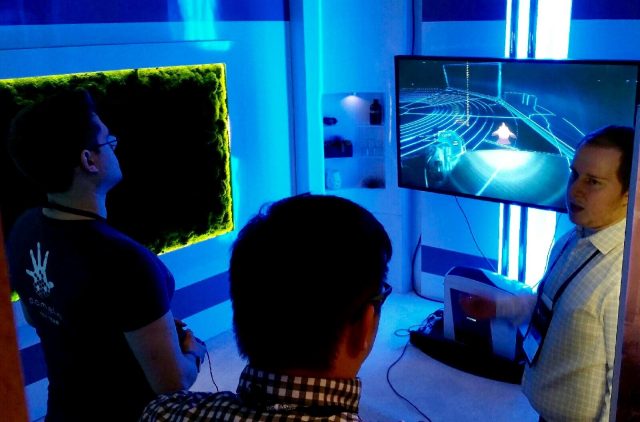
Quite frankly, 3D glasses have never failed to be anything but a headache inducing, slightly blurry mess for me. That might be why a recent demo of a new glasses-free 3D TV from Ultra-D blew me away. It just works.
Six years or so after the industry declared that stereoscopic 3D displays were going to be the future of entertainment, 3D TVs are decidedly not the present of entertainment. A combination of relatively wonky glasses technology, high costs, and a general lack of interesting content have turned what was once a hot ticket into an overwhelming market flop, save for a few holdout TV set makers and aging devices like Nintendo’s 3DS line.
At least one company thinks it finally has the right combination of technology and timing to give traditional 2D displays some added depth, though. After years of quiet development, StreamTV Networks has started manufacturing displays with its Ultra-D technology—displays that don’t require glasses, focal “sweet spots,” or much in the way of specially made 3D content. After seeing the technology on display at DICE recently, I found myself less-than-skeptical about stereoscopic TVs for quite possibly the first time ever.
If you happen to glance at an Ultra-D TV without being prompted, it can take your brain a second or two to figure out what exactly is different about the image you’re seeing. The 3D effect is a bit subtle, with less apparent depth than most other stereoscopic systems (or the very convincing depth effect on a virtual reality headset). Still, there’s a distinct layering to the image that draws your attention immediately, and it helps focus that attention to the foreground action and away from the blurry background.
The 3D image on the Ultra-D screen is much crisper than most other stereoscopic systems I’ve seen, without any of the frame rate, resolution, or brightness compromises that are common to other 3D solutions. Ultra-D uses a proprietary glass-cutting and gluing process to create a series of “overlapping microviews.” That means the 3D effect is solid anywhere within a 140 degree viewing area, without the need for special glasses or dithering parallax barriers to separate out different images for each eye.
“We bend the light through the glass, so there’s no right or left alternating image,” StreamTV Networks Software Engineer Dusten Sobotta told Ars. “You don’t need two cameras or any of that… all of the traditional stereoscopic thought process doesn’t apply here.”
“Mechanically, the glass doesn’t change, but there’s an algorithm being run on the input image that scatters it, rearranging the pixels knowing what the glass arrangement does to those pixels,” he continued. “Given an input image and depth [data], the lens scatters the light, almost into a field, such that your eyes looking at a single point in space will see two different things.”
[“Source-arstechnica”]
 Techosta Where Tech Starts From
Techosta Where Tech Starts From